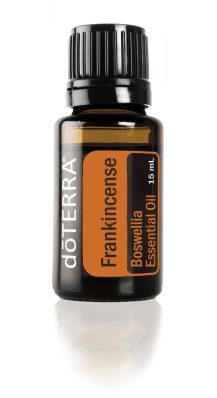Be safe with your cats and essential oils usage
As a cat owner, it’s important to prioritize the well-being and safety of your feline companions. While essential oils can provide numerous benefits for humans, their usage around cats requires caution. Understanding the potential risks and adopting safe practices will allow you to enjoy the benefits of essential oils while keeping your cats safe and healthy.

Know Your Essential Oils:
Not all essential oils are created equal, and some can pose a risk to cats. Certain essential oils contain compounds that can be toxic or irritating to cats when ingested or absorbed through the skin. Tea tree oil, peppermint oil, citrus oils, eucalyptus oil, and pennyroyal oil are examples of essential oils that should be avoided or used with extreme caution around cats.

Safe Essential Oils for Cats:
There are a few essential oils that are considered relatively safe for cats when used properly. Lavender oil, frankincense oil, copaiba oil, helichrysum oil, and cedarwood oil are among the essential oils that can be used with caution around cats. However, it’s important to dilute these oils and use them sparingly. Consult with a veterinarian before introducing any essential oils to your cat’s environment.

Dilution and Diffusion:
Dilution is key when using essential oils around cats. Never apply undiluted essential oils directly to your cat’s fur or skin. Instead, dilute essential oils with a carrier oil, such as coconut oil or jojoba oil, using the appropriate ratio. The recommended dilution ratio for cats is usually 1 drop of essential oil per 50 drops of carrier oil.
When diffusing essential oils, ensure that the concentration in the air is minimal. Use a well-ventilated area and allow your cat to move away from the diffuser if desired. Keep in mind that cats have a stronger sense of smell than humans, so even a faint aroma might be overpowering for them.

Observation and Avoidance:
Always closely observe your cat’s behavior and reactions when using essential oils. Look out for any signs of discomfort, such as excessive drooling, sneezing, coughing, difficulty breathing, or changes in behavior. If you notice any adverse reactions, remove your cat from the area and discontinue the use of essential oils.
Respect your cat’s preferences and provide them with a safe space free from the use of essential oils if they show signs of discomfort. Each cat is unique, and their sensitivity to essential oils may vary.

Consult with a Veterinarian:
Before introducing essential oils to your cat’s environment or using them for any specific purpose, consult with a veterinarian. They can offer guidance based on your cat’s individual health status and provide personalized advice. A veterinarian’s expertise will help ensure the safety and well-being of your feline companion.
That being said, there are a few essential oils that are generally considered safer to use around cats when used in a very diluted form and under veterinary guidance.
These include:
- Lavender: It is often considered one of the safer essential oils for cats, but it should still be used sparingly and with caution.

2. Frankincense: In small quantities, this oil is generally considered safe for cats. However, it’s always best to consult with a veterinarian before using it.

3. Chamomile: Chamomile essential oil, when properly diluted, can be used with caution around cats.

Remember, even with these oils, it’s crucial to dilute them significantly and use them in a well-ventilated area. It’s also important to monitor your cat for any signs of discomfort or adverse reactions and discontinue use if any issues arise. Additionally, never apply essential oils directly to your cat’s fur or skin unless specifically directed by a veterinarian.
It’s worth noting that some products marketed as essential oils may contain additional ingredients that could be harmful to cats, so always read the labels carefully. When in doubt, it’s best to consult with your veterinarian to ensure the safety of your cat.
Conclusion:
Using essential oils in a house with cats requires careful consideration and adherence to safe practices. By understanding which essential oils are safe for cats, diluting them properly, observing your cat’s reactions, and seeking professional advice, you can create a harmonious environment where you can enjoy the benefits of essential oils while prioritizing the health and safety of your beloved cats.
How to Remove Oil from a Cat
There is a “WIKI How” that may help in an emergency if your Cat has gotten oil on themselves please read below.
Free Essential Oils & Safety for Pets Guide
The number one question people ask when it comes to essential oils and pets is, "Are they even safe?" Veterinarian, Dr. Janet Roark has an awesome resource that explains everything we need to know! And the best part is… it’s free! I love this guide so much and I feel like it’s going to help you and animals just like yours. It’s going to stop a lot of fear that’s out there.
In this guide, Dr. Roark busts essential oil myths, shares her best techniques, and shares her secrets on diffusing safely regardless of what type of animal you are caring for.
This guide includes:
- Introducing oils to your pet
- How to use essential oils
- Diffusing oils safely around animals
- Top 10 essential oils for animals
- Using oils safely with dogs
- Using oils safely with cats
- Using oils safely with birds
- Using oils safely with rabbits (and more)
- Reptiles, amphibians, and fish
- Horses, cattle, and Goats
- Myth-busting: the truth about essential oils and pets
- Do’s and don’ts and other safety tips
- Dilution guide for topical use











